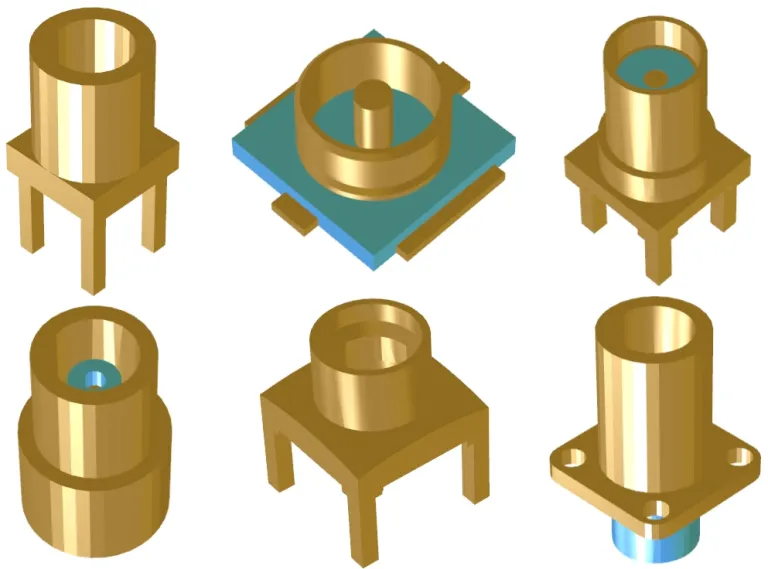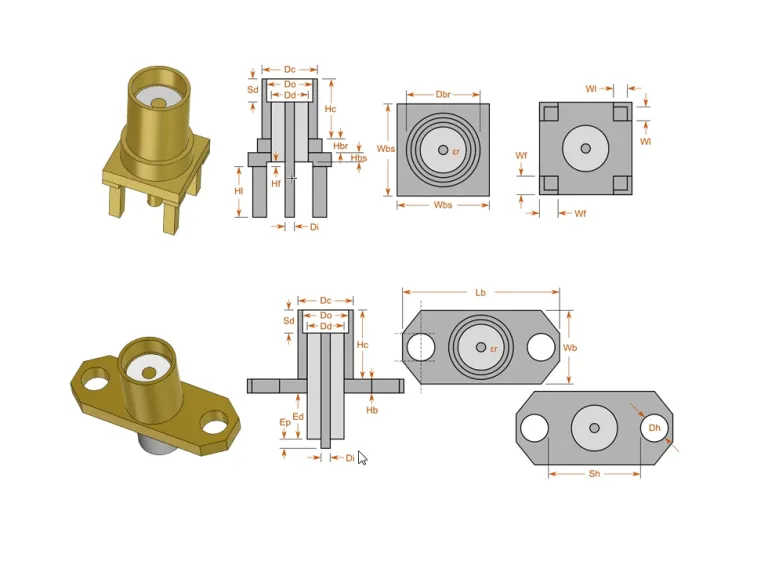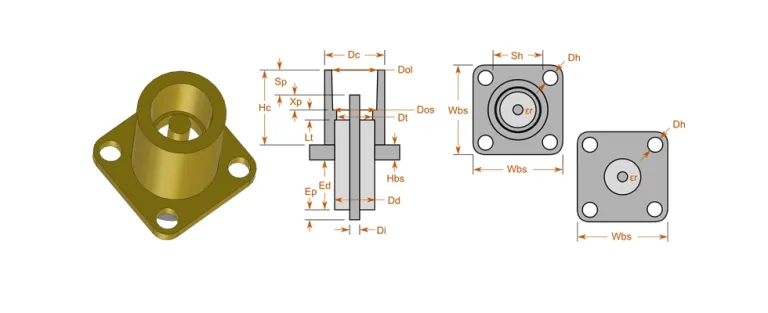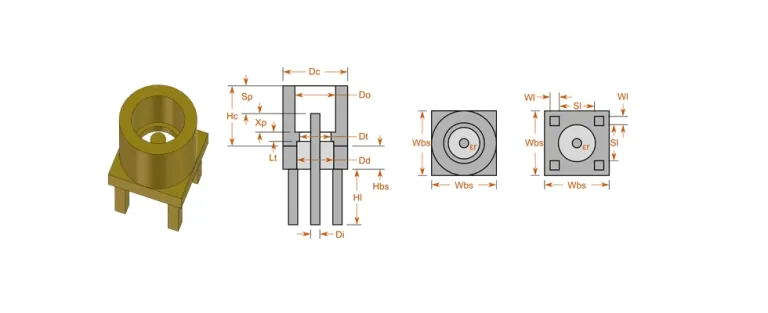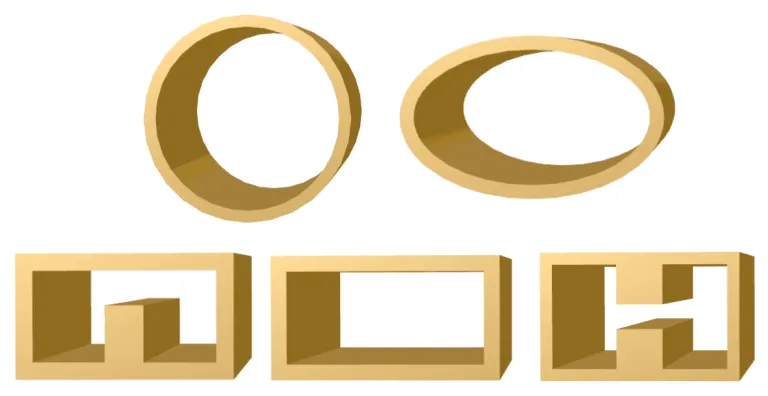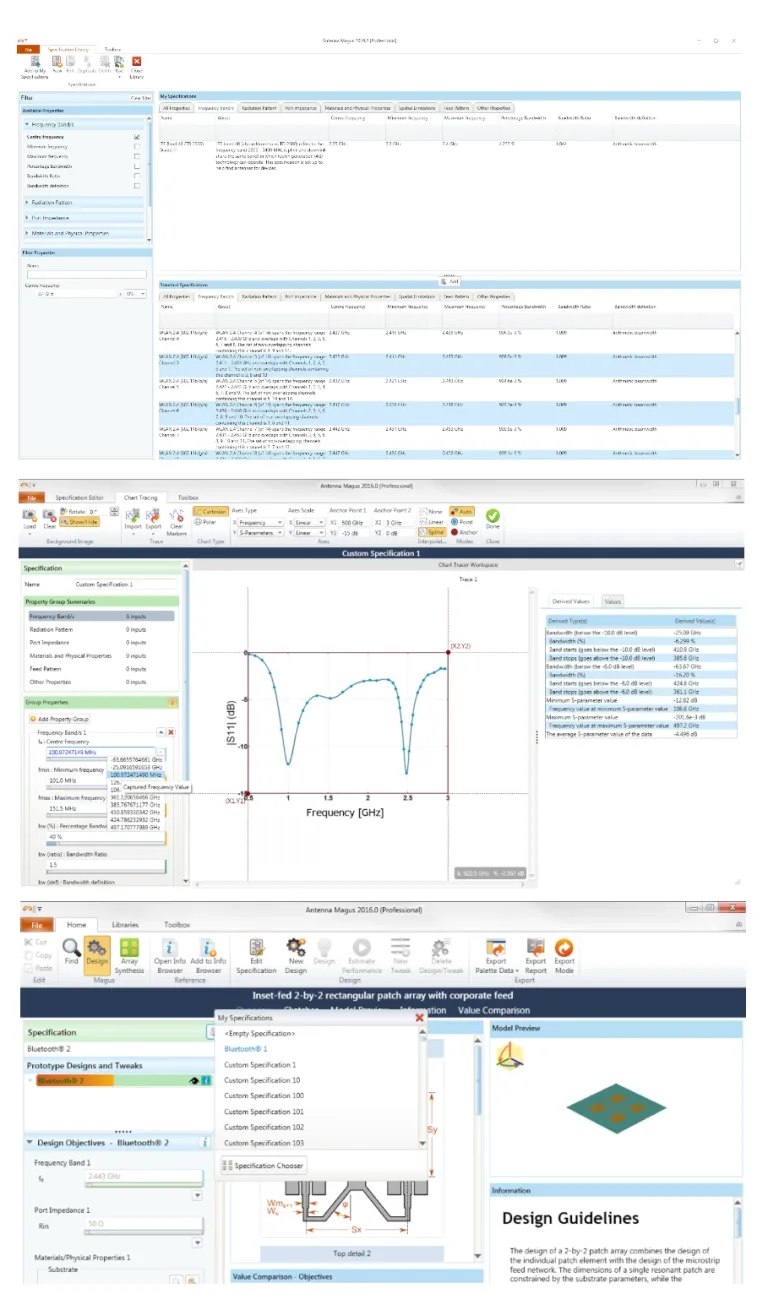Antenna Magus Libraries
Simplify Finding Commercial/Standard Substrates, Waveguides, Connectors and Specifications
The Antenna Magus Libraries
Antenna Magus includes libraries for specifications, substrates, waveguides and connectors. These libraries simplify finding commercial/standard substrates, waveguides, connectors and specifications. We use specifications to find devices and to set up objectives for a specific application area. We use substrates in the substrates library when designing antennas in Antenna Magus, while we import the waveguide and connectors from their respective libraries. You can access the libraries at any time by going to the ‘Libraries’ tab on the ribbon.
Antenna Magus Libraries
- Connector Library
- Waveguide Library
- Substrate Library
- Specification Library
The Antenna Magus Connector Library
The Antenna Magus Connector library contains various common coaxial radio frequency (RF) connectors that are used when modeling antennas. For each connector type, parametric export models are available for supported CEM tools. For some connectors, the option exists to select between different types (for example panel-mount or edge mount) in Export mode.
Here is a brief review of a few of the connectors in the library:
SMA - SubMiniature Version A Connector
This 50-ohm SMA connector uses a polytetrafluoroethylene (PTFE) dielectric and offers excellent electrical performance from DC to 12.4 GHz (for flexible cables) and DC to 18 GHz (for semi-rigid cables). Above this frequency and up to 34 GHz, SMA-like 3.5 mm connectors are used - which can be mated to standard SMA connectors.
N-Type Connector
N-Type four hole panel mount jack with extended dielectric.
The N-type connector dates back to 1940 and was one of the first connectors capable of carrying microwave-frequency signals. The standard upper operating frequency is 11 GHz and some connectors are extended to operate at 18 GHz.
The image shows an N-Type four hole panel-mount jack connector with extended dielectric, typically used to feed a cavity or waveguide.
MMCX - Micro-Miniature Coaxial - Connector
MMCX connectors were developed in the 1990s and are similar, but smaller, than MCX connectors. These connectors are most commonly used in Wi-Fi PCMCIA cards as antenna connectors, or as external GPS antenna connectors on small devices. They use a snap-lock mechanism, allowing 360° rotation, usually with 50-Ω impedance and have good electrical performance from DC to 6 GHz.
The waveguide library in Antenna Magus is a collection of common designation standardized waveguides. We use it to find the dimensions of a specific designation or to find the electrical characteristics of a standard guide. The library shows cut-off frequencies, and usage frequency ranges. Company/industry can add custom waveguides to the library for easy reference.
The Antenna Magus Waveguide Library
The waveguide library in Antenna Magus is a collection of common designation standardized waveguides. We use it to find the dimensions of a specific designation or to find the electrical characteristics of a standard guide. The library shows cut-off frequencies, and usage frequency ranges. Company/industry can add custom waveguides to the library for easy reference.
Ridged waveguides
A rectangular waveguide has a bandwidth of approximately 45%. The fundamental TE10 cutoff frequency limits it at the low, the cutoff frequencies of the next higher-order modes, for example, TE01 and TE20 at the upper end. By adding a central ridge to either the top, the bottom or both of a rectangular waveguide, we can lower the cutoff frequency of the dominant mode, leading to increased bandwidth.
Circular waveguides
A circular waveguide consists of a hollow-pipe with a cylindrical cross section. We use these waveguides in various applications, especially those applications, which require a specific polarization. This waveguide is able to support linear, circular or dual-linear polarizations.
Rectangular waveguides
Rectangular waveguides were one of the earliest types of transmission lines used to transport microwave signals. They are still used in many applications today. High-power systems, millimeter wave systems and precision test applications are just a few areas where these waveguides are used. We support transverse electric (TE) and transverse magnetic (TM) modes in hollow rectangular waveguides. The TE and TM modes have cutoff frequencies, below which they cannot propagate.
Elliptical waveguides
Waveguides, which are elliptical in cross section, are useful for antenna feeds. The elliptical waveguide has many characteristics, which are similar to rectangular waveguides, making the transition between the two relatively easy.
The Antenna Magus Substrate Library
The substrate library contains an extensive list of commercial substrates and allows for the easy addition of user-specified substrates. This library eliminates the need to search the literature or the internet for suitable substrates for a given antenna element. The substrate library is one click away and it conveniently filters the whole database of substrates according to specified physical or electrical properties
The Antenna Magus Specification Library
The Specification Library can store various design specifications in a structured format. These Specifications can later be used in Find Mode (to help identify feasible antennas) and in Design Mode (to populate the Design Objectives of antennas in the Collection). The Library includes several pre-defined specifications. These pre-defined Specifications can be used as-is or expanded and refined by the user.
Each Specification contains Values representing the performance requirements of the targeted design, and Keywords describing the required antenna. Specifications can be defined and refined using the tools provided in the Specification Editor interface. These tools include the
Antenna Magus Keyword dictionary, the Conversion Calculators (also available in the Design Mode) and the advanced Chart Tracer tool.
Specifications stored in the Specification Library can populate the Keyword search terms in the Find Mode of Antenna Magus, and can also populate the design objectives of all antennas quickly.
Also Discover
Learn What SIMULIA Can Do for You
Speak with a SIMULIA expert to learn how our solutions enable seamless collaboration and sustainable innovation at organizations of every size.
Get Started
Courses and classes are available for students, academia, professionals and companies. Find the right SIMULIA training for you.
Get Help
Find information on software & hardware certification, software downloads, user documentation, support contact and services offering

